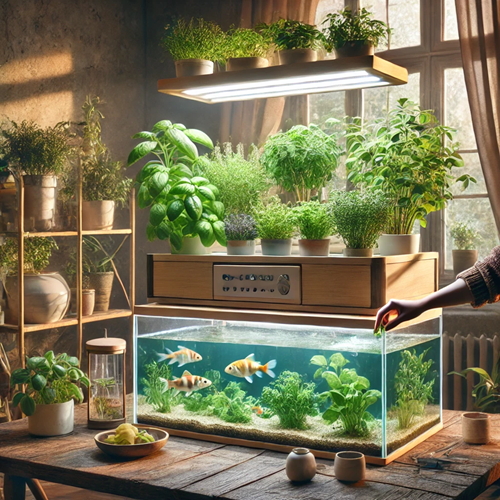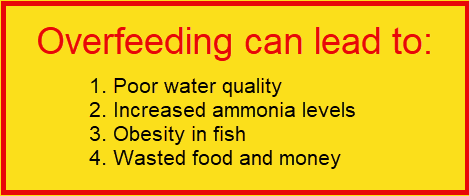
A Comprehensive Guide
As an aquaponics enthusiast, I’ve learned that feeding your fish is both an art and a science. It’s not just about tossing in some flakes and calling it a day. No, my friends, it’s about understanding the intricate balance between your fish, plants, and the entire ecosystem you’ve created. Today, I’m going to share my insights on feeding your aquaponics fish, drawing from years of experience and countless trials (and yes, a few errors along the way).
Understanding Aquaponics Fish Nutrition
Let’s dive right in, shall we? The key to a thriving aquaponics system lies in understanding what your fish need to not just survive but thrive.
The Importance of a Balanced Diet
Think of your fish as the powerhouse of your aquaponics system. They’re not just there to look pretty; they’re the driving force behind the nutrient cycle that feeds your plants. A balanced diet for your fish is crucial because it directly impacts the quality of nutrients feeding your plants.
In my early days, I made the mistake of thinking any old fish food would do. Boy, was I wrong! I quickly learned that a balanced diet leads to healthier fish, better waste production (yes, we want that!), and ultimately, more robust plant growth.
Key Nutrients for Aquaponics Fish
-
- Just like us humans, fish need a variety of nutrients to stay healthy. The main components you should look for in fish feed are:
- Protein: This is the building block for fish growth. Depending on the species, your fish might need anywhere from 30% to 45% protein in their diet.
- Fats: Essential for energy and to help absorb fat-soluble vitamins.
- Carbohydrates: While fish don’t need as many carbs as we do, they still play a role in energy production.
- Vitamins and Minerals: These micronutrients are crucial for various bodily functions and overall health.
When I first started out, I was so focused on protein content that I neglected other nutrients. Trust me, a well-rounded diet makes all the difference!
Types of Fish Feed for Aquaponics Systems
Now that we understand what our finned friends need let’s talk about how to deliver those nutrients.
Commercial Fish Pellets
Commercial fish pellets are the go-to for many aquaponics enthusiasts, and for good reason. They’re convenient, nutritionally balanced, and come in various sizes to suit different fish species and life stages.
I’ve tried numerous brands over the years, and while
I won’t name names; I’ve found that looking for pellets specifically formulated for your fish species yields the best results. For example, tilapia pellets work wonders for… well, tilapia!
Homemade Fish Feed
For the DIY enthusiasts out there (I see you!), making your own fish feed can be a rewarding experience. It allows you to control exactly what goes into your fish’s diet and can be more cost-effective in the long run.

Remember, though, that homemade feed requires careful balancing of nutrients. It took me several attempts to get it right, so don’t be discouraged if your first batch isn’t perfect!
Live and Frozen Foods
Ah, the caviar of fish feeds! Live and frozen foods like bloodworms, brine shrimp, and daphnia are excellent for adding variety to your fish’s diet. They’re particularly useful for picky eaters or when you’re trying to condition fish for breeding.
I love treating my fish to live foods once a week. Not only does it provide them with a nutritional boost, but it’s also entertaining to watch them chase their food around the tank!
Feeding Techniques and Best Practices
Now that we’ve covered what to feed your aquaponics fish, let’s talk about how to feed them.
Determining the Right Feeding Frequency
The million-dollar question:
How often should you feed your fish? Well, it depends on several factors:
-
- Fish species
- Age and size of fish
- Water temperature
- System design
I’ve found that feeding adult fish 2-3 times a day works well. Younger fish may need more frequent feedings, up to 4-5 times daily. Remember, it’s better to feed small amounts more often than large amounts less frequently.
Calculating Proper Feeding Amounts
Here’s where things get a bit mathematical. As a rule of thumb, feed your fish about 1-2% of their body weight per day. For example, if you have 100 grams of fish, you’d feed them 1-2 grams of food daily.

Don’t worry if this seems daunting at first. With practice, you’ll develop an eye for the right amount.
Observing Fish Behavior During Feeding
One of the most valuable lessons I’ve learned is to watch my fish during feeding time.
Their behavior can tell you a lot:
-
- If they’re not interested in food, you might be overfeeding.
- If they’re frantically competing for every morsel, you might be underfeeding.
- If some fish are being bullied away from food, you might need to spread the food out more.
Common Challenges in Feeding Aquaponics Fish
Even with the best intentions, you might encounter some hurdles. Let’s tackle a few common ones.
Overfeeding and Its Consequences
I’ll admit it: I’ve been guilty of overfeeding in the past. It’s an easy mistake to make, especially when those little fish eyes are begging for more!

To avoid this, stick to your calculated feeding amounts and resist those pleading fish eyes!
Underfeeding and Growth Issues
On the flip side, underfeeding can stunt fish growth and lead to nutrient deficiencies in your plants.
Signs of underfeeding include:
-
- Slow growth rates
- Aggression during feeding times
- Visible spine or sunken belly in fish
If you notice these signs, gradually increase your feeding amounts while monitoring water quality.
Dealing with Picky Eaters
Just like humans, some fish can be picky eaters. I once had a batch of tilapia that turned their noses up at perfectly good pellets!
Here are some strategies I’ve used to deal with finicky fish:
-
- Try different brands or types of food.
- Introduce live or frozen foods.
- Soak dry food in fish stock or garlic juice to make it more appetizing.
- Ensure the food size is appropriate for your fish.
Remember, persistence is key. It might take some time, but you’ll eventually find what works for your aquatic gourmets.
Seasonal Considerations for Fish Feeding
One aspect of feeding that often gets overlooked is how seasons can affect your fish’s appetite. In my experience, most fish eat less during colder months and more during warmer months.
During winter, you might need to reduce feeding amounts by up to 30%. Conversely, in summer, you may need to increase feeding slightly. Always keep an eye on water temperature and adjust accordingly.
Monitoring and Adjusting Your Feeding Regimen
Feeding your aquaponics fish isn’t a set-it-and-forget-it task. It requires ongoing observation and adjustment. Here’s what I do:
- Keep a feeding log: Note feeding times, amounts, and observations.
- Regularly weigh a sample of fish: This helps you adjust feeding amounts as your fish grow.
- Monitor water quality: Excessive waste can indicate overfeeding.
- Observe plant growth: Poor plant growth might suggest underfeeding.
Remember, every aquaponics system is unique. What works for me might need tweaking for your setup. Don’t be afraid to experiment and find what works best for your fish and plants.
Conclusion
Feeding your aquaponics fish is a crucial aspect of maintaining a healthy, productive system. It’s about finding the right balance of nutrition, quantity, and frequency. While it might seem overwhelming initially, with time and practice, you’ll develop an intuitive understanding of your fish’s needs.
Remember, happy fish mean happy plants, and happy plants mean a bountiful harvest. So, take the time to get your feeding regimen right. Your fish (and your taste buds) will thank you!
FAQs
- Q: Can I feed my aquaponics fish human food leftovers?
A: While some human foods can be okay in moderation, it’s best to stick to foods formulated for fish to ensure proper nutrition and water quality. - Q: How long can my fish go without food if I’m away?
A: Most adult fish can survive for a week without food, but it’s best to arrange for someone to feed them or use an automatic feeder for absences longer than 2-3 days. - Q: Is it okay to feed my fish live insects from my garden?
A: While many fish enjoy insects, garden insects may carry parasites or pesticides. It’s safer to stick with commercially raised live foods. - Q: My fish are always hungry. Should I feed them more?
A: Not necessarily. Many fish will eat whenever food is available. Stick to recommended feeding amounts to avoid overfeeding. - Q: Can overfeeding kill my fish?
A: While overfeeding itself won’t directly kill fish, it can lead to poor water quality and obesity, which can be fatal. Always feed in moderation.
